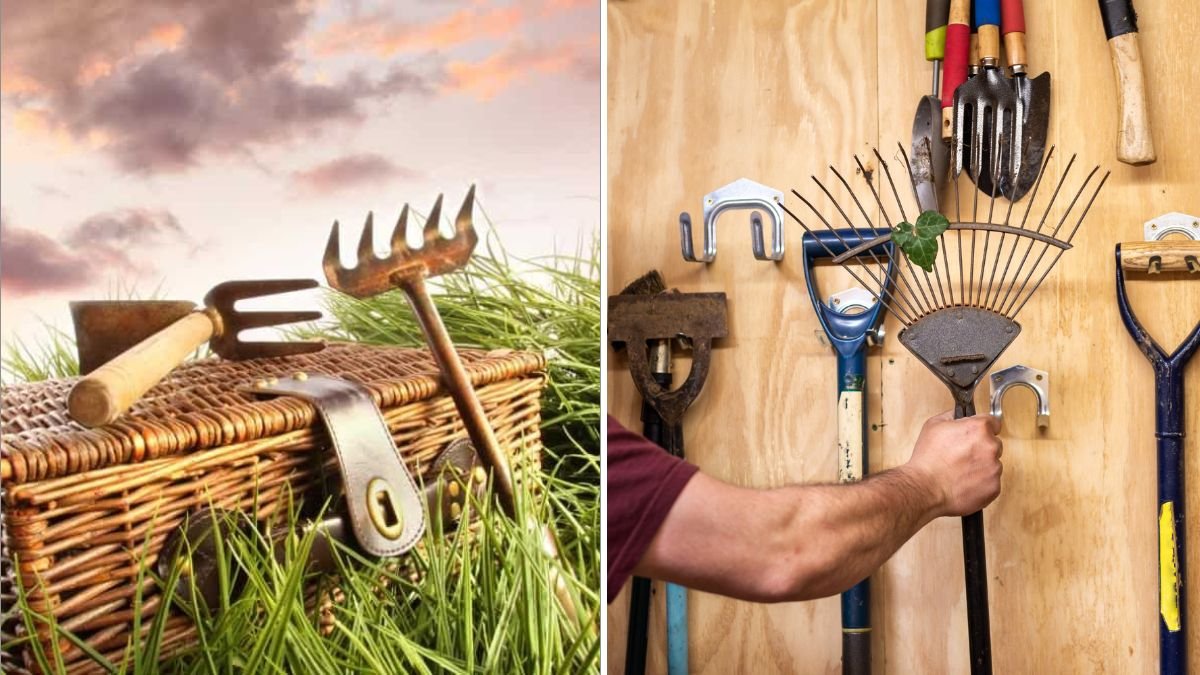Rust is every gardener’s enemy when it comes to maintaining tools. Whether it’s a favorite pair of pruners, a sturdy spade, or a wheelbarrow, rust shortens tool life and makes gardening harder. The good news? With consistent care and a few simple tricks, you can keep your garden tools rust-free all year long. Not only does this save you money on replacements, but it also makes gardening more efficient and enjoyable.
Here’s a complete guide on how to prevent rust, protect tools, and keep them in top shape season after season.
Why Rust Forms on Garden Tools
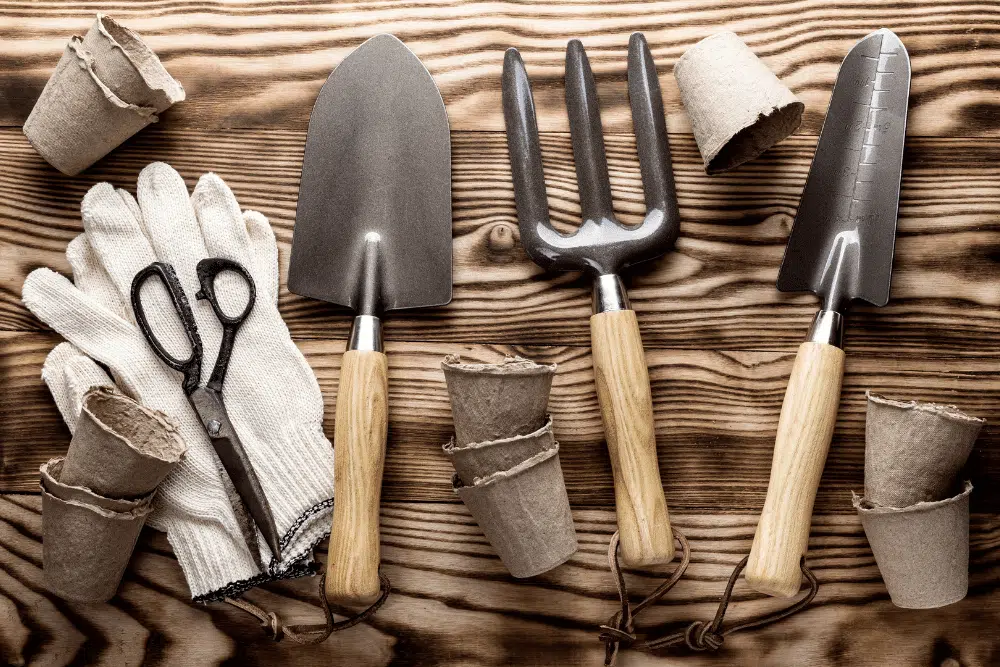
Rust is a natural process—iron reacts with oxygen and moisture, forming iron oxide (rust). Garden tools are especially vulnerable because:
- They’re often exposed to wet soil, rain, and morning dew.
- They may not be cleaned properly after use.
- They’re stored in damp or poorly ventilated sheds.
Understanding what causes rust helps you prevent it before it starts.
Step 1: Clean Tools After Every Use
The first and most important step in rust prevention is cleaning. Even a few hours of dirt and moisture left on a blade can start the corrosion process.
- Remove soil and debris with a stiff brush or old rag.
- Wash with water if needed, but always dry thoroughly.
- Use mild soap for sticky plant sap or stubborn dirt.
- Scrub lightly with steel wool or a wire brush if rust spots are just starting.
Routine cleaning prevents buildup that holds moisture against metal.
Step 2: Dry Tools Thoroughly
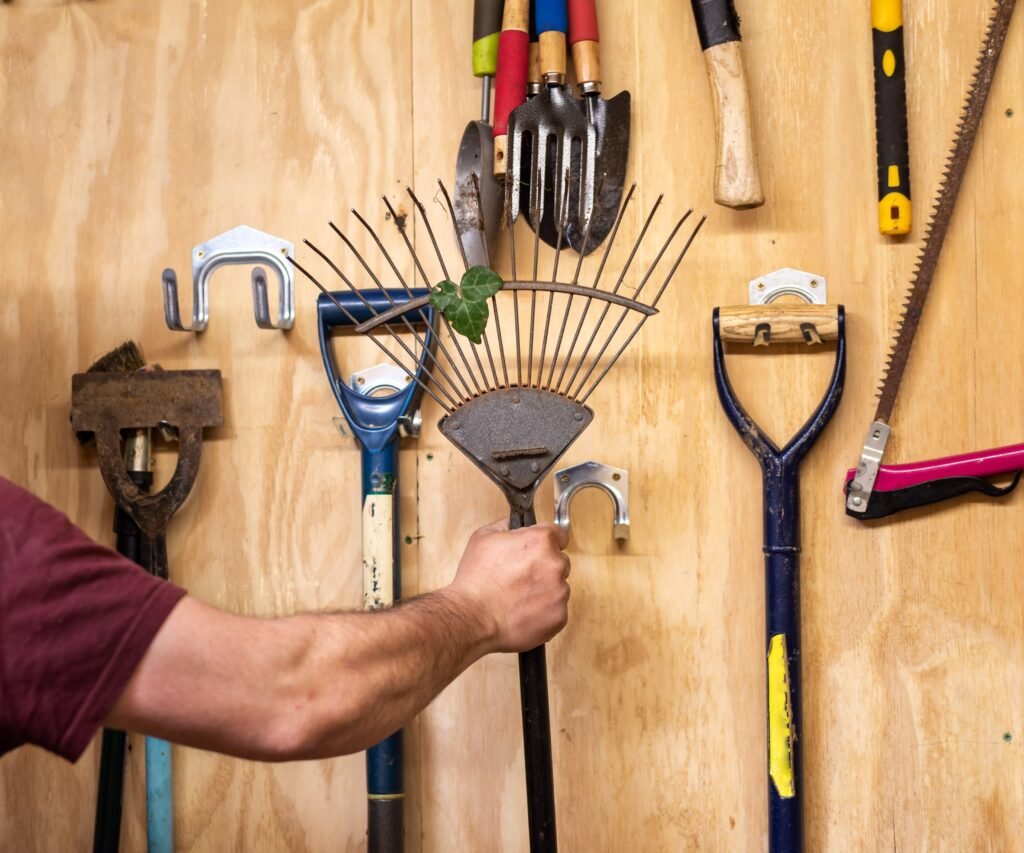
Drying is just as important as cleaning. A wet tool is a rusty tool.
- Keep an old towel in your shed for quick drying.
- Air-dry tools before storing if you’ve washed them.
- For faster drying, wipe with rubbing alcohol—it removes moisture and disinfects at the same time.
Step 3: Oil Moving Parts and Metal Surfaces
Metal surfaces and hinges need lubrication to resist rust. A thin layer of oil repels moisture and keeps tools moving smoothly.
Options include:
- Linseed oil – Great for wooden handles and metal parts.
- Mineral oil – Safe and inexpensive.
- Vegetable oil – Works in a pinch, though it may go rancid if not reapplied often.
- Specialized tool oils – Long-lasting and protective.
Pro tip: Fill a bucket with sand mixed with a little oil. After gardening, plunge your tools into the bucket—this cleans off dirt while coating them with a protective layer.
Step 4: Maintain Wooden Handles
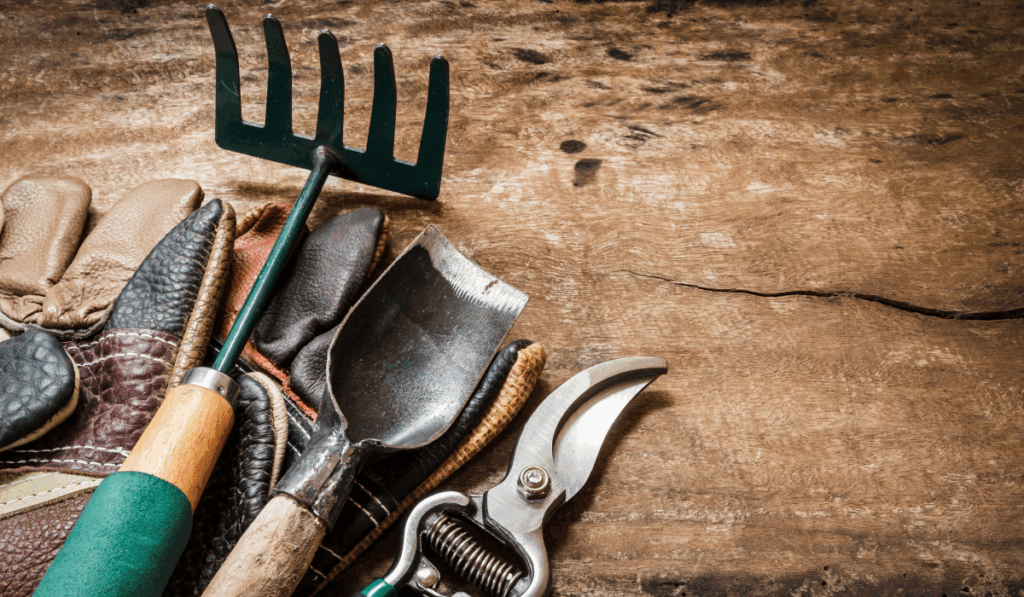
Rust prevention isn’t just about metal—wooden handles also need care. Cracked, splintering wood holds moisture, which eventually transfers to metal.
- Sand rough spots on handles.
- Rub in boiled linseed oil to condition and seal wood.
- Store tools out of direct sun to prevent drying and cracking.
Healthy handles mean healthier, rust-free tools overall.
Step 5: Store Tools Properly
How and where you store tools makes a big difference. The best cleaning and oiling won’t matter if tools are left outside in the rain.
- Keep tools indoors in a shed, garage, or covered storage box.
- Hang tools vertically so moisture doesn’t collect on blades.
- Use hooks, racks, or magnetic strips to keep tools organized and off the floor.
- Add ventilation to storage areas to reduce dampness.
If your shed is especially humid, consider using silica gel packs, a small dehumidifier, or even a bucket of charcoal to absorb moisture.
Step 6: Seasonal Deep Maintenance

At least twice a year—once in spring and once before winter—give your tools a full inspection and tune-up.
- Sharpen blades with a file or sharpening stone.
- Tighten screws and bolts on pruners, loppers, and shears.
- Apply fresh oil to all metal surfaces.
- Check wooden handles for cracks or looseness.
Before winter storage, be especially thorough: clean, sharpen, oil, and store tools in a dry place. This ensures they’re ready for immediate use come spring.
Step 7: Rescue Rusty Tools
If rust has already set in, don’t panic. Many tools can be revived with a little effort.
- Light rust – Scrub with steel wool or sandpaper.
- Moderate rust – Soak in white vinegar overnight, then scrub.
- Heavy rust – Use a rust remover solution or wire brush attachment on a drill.
Once clean, oil the tool thoroughly to prevent rust from returning.
Bonus Tips for Long-Term Rust Prevention
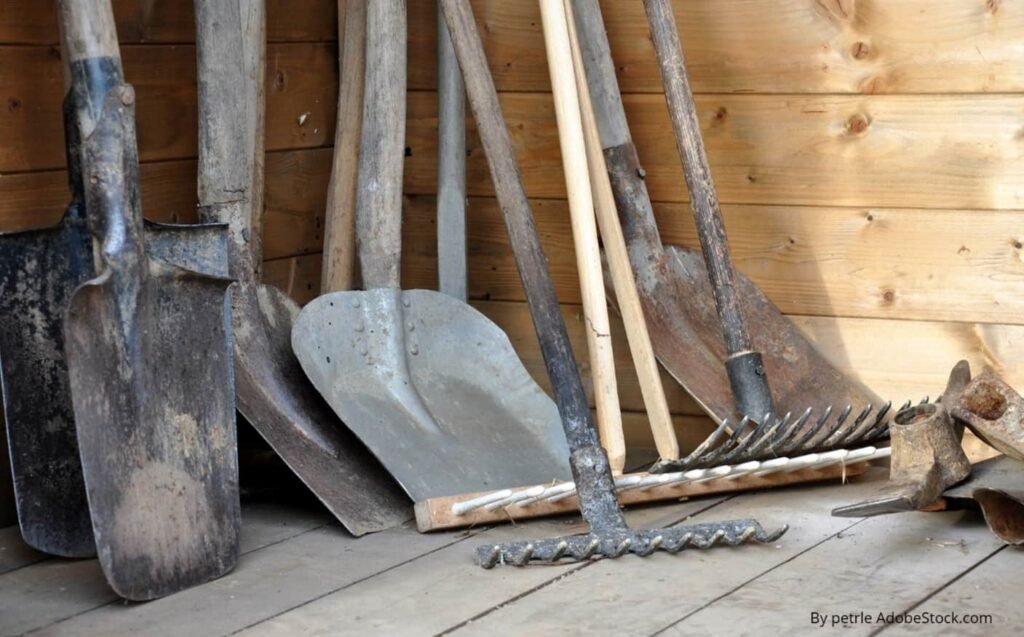
- Keep a spray bottle of oil handy for quick protection after use.
- Label an old rag as your “oil cloth” and reuse it for wiping down tools.
- For small hand tools, store them in a box of sand and oil—both cleans and protects.
- Never leave tools lying in wet grass or soil overnight.
Final Thoughts
Rust is inevitable if tools are neglected, but with a little regular maintenance, you can keep your garden gear in excellent condition for years. Clean after every use, dry thoroughly, oil regularly, and store properly—that’s the winning formula.
Your tools are an investment in your garden. With just a few minutes of care after each project, you’ll spend less time fighting rust and more time enjoying the ease of sharp, strong, rust-free tools.
By keeping up these habits year-round, your spades, pruners, and shovels will serve you faithfully season after season—making gardening both easier and more rewarding.
